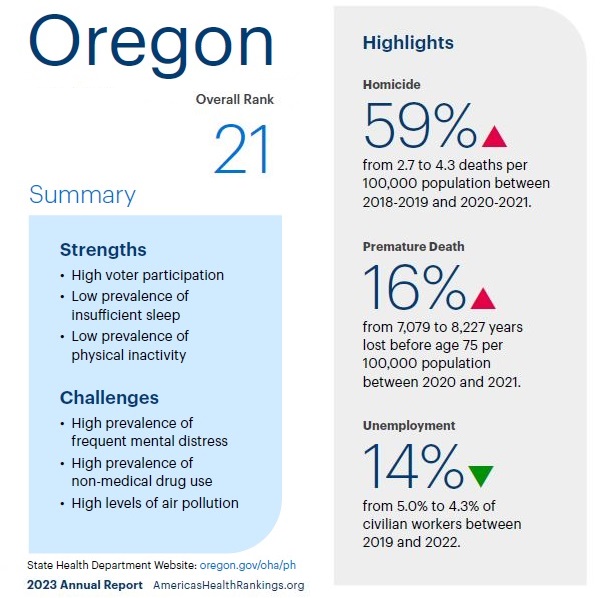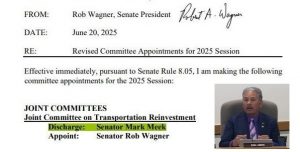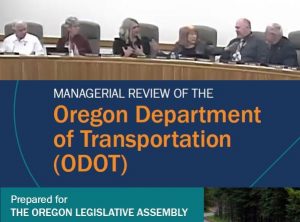Plodding toward universal health coverage
3 min read
by Marty Wilde
Oregon is poised to make significant progress toward universal health coverage this year. Recent data put the uninsured rate in Oregon at 6%, about a two-thirds reduction in the percentage of people who lacked coverage before the Affordable Care Act.
Despite this progress, gaps remain and not all who have coverage can afford to use it. Building on the 2023 expansion of Medicaid to all low-income immigrants, Oregon will start a new health plan in July that should further reduce the number of uninsured and underinsured persons.
The ACA had two major parts: the expansion of Medicaid to people up to 138% of the Federal Poverty Line and the provision of subsidies for health insurance for people earning up to 400% of the FPL. Medicaid expansion succeeded in Oregon, allowing the state to piggyback programs like health care for migrant workers and dental care for veterans onto it.
However, the second half of the program is less successful. Tax subsidies gave many people in the 138% to 250% FPL range “free” bronze plans on the exchanges. However, these plans had high deductibles and cost sharing. Even free insurance doesn’t go far with a deductible in the thousands of dollars for someone making $25,000 a year.
In 2022, Oregon voters passed Measure 111, giving all Oregonians a state constitutional right to affordable, clinically appropriate, and cost-effective health care. The new basic health plan will implement Measure 111 by taking the federal money that was used for tax credits and use it to expand Medicaid up to 200% of the FPL.
The program will be administered through the Oregon Health Plan (Oregon’s Medicaid program). This minimizes Medicaid “churn”, which happens when families’ varying income causes them to go on and off the Medicaid rolls frequently. It comes at just the right time for many, as the pandemic area requirement not to drop people off Medicaid comes to an end.
It is not all sunshine and roses, unfortunately. Medicaid only pays providers about 80% of the cost of providing care. Conversely, Medicare pays 100% – 102% of the cost. Effectively, this means that providers will have to charge private insurers more to cover the deficit, meaning that provider reimbursements from private health insurance generally range from 120% – 200% of the cost of delivery.
It is for this reason that most single payer proposals rely on Medicare as their foundation, not Medicaid. Expanding OHP up to 200% of the FPL is expected to drive costs up and will hit those in the 200% – 250% FPL range particularly hard.
We are seeing Oregon’s over-reliance on Medicaid not just in high private insurance premiums, but also in limited access to primary care. To put it bluntly, we have expanded health insurance coverage at the cost of making it very difficult for providers to offer primary care.
This is especially true in pediatrics. When the federal government passed the Children’s Health Insurance Plan (CHIP) in the 1990s, Oregon piggybacked pediatric care on Medicaid up to 300% of the FPL, similar to what will happen under the basic health plan.
Almost half of all babies born in Oregon are on Medicaid or CHIP and Oregon’s uninsured rate for children is half that for adults. However, because provider reimbursements for care are far below the cost of delivering healthcare services, access to pediatric care has become more and more difficult, with access to children’s mental health care being especially poor. Access to primary care has become so difficult that Oregon’s most recent Medicaid plan had to include specific provisions ensuring that payments to primary care providers did not drop below 80% of the cost of delivery.
Despite the drawbacks, the Basic Health Plan represents a big step forward. About 100,000 Oregonians, roughly 2.3% of the population, are expected to benefit from it. While not all of these would have been uninsured, a substantial portion were and others had health insurance that was too expensive to use.
While it’s no quantum leap forward, the Basic Health Plan represents significant progress toward universal health coverage.
Marty Wilde represented central Lane and Linn counties in the Oregon legislature. For more of his Letters From a Recovering Politician, subscribe at https://martywilde.substack.com/subscribe. For fellow health policy nerds, he also recommends the podcast What the Health from kff.org.






